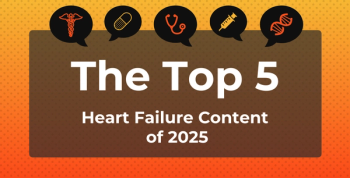
Targeted Policies, Further Research Needed to Tackle Insulin Costs, Use Disparities: Elise S. Tremblay, MD, MPH
Elise S. Tremblay, MD, MPH, explores potential policy solutions and research directions to address ongoing challenges in insulin affordability and access.
In the final part of this interview, Elise S. Tremblay, MD, MPH, lead investigator of "Trends in
Revisit parts
This transcript has been lightly edited; captions were auto-generated
Transcript
Based on your findings, what targeted policy measures would you recommend to make insulin more affordable?
I think that we can come at this from a number of different angles. I think any of them will require some public will behind them, because drug manufacturers are not necessarily motivated to limit the prices of their medications. But I think with the public-private partnerships and work with government and regulations, we could really make it useful to institute more caps on the price of insulin or more caps on the out-of-pocket costs of insulin in health insurance plans.
I think, more broadly, there needs to be more research, as well, and development of medications for diabetes that help to limit the cost of some of the more basic medications. There should also be targeted plans that will allow individuals who have less disposable income to spend on their insulin and other important medications to have access to those medications at a lower cost. Those will have to come through, I would presume, policy initiatives or employer-sponsored health care plan bonuses, things like that, to make sure that they can support the individuals at the most risk.
What further research is needed to better understand and address insulin affordability and usage disparities among commercially insured patients?
By the virtue of our research and the data that we had access to, because it was claims-based data, we didn't have access to individual-level socio-demographic characteristics. I think that is a key component that would help us better describe the population of people who aren't accessing insulin consistently. I think studies like these could be replicated in single centers with more information about individual-level demographics than we have on this claims-based data.
I also think it's important to understand from patients why it is that they make the decisions that they do about health care and health care costs. In order to do that, you really need to get into the meat of things with qualitative research, focus groups, and interviews with patients, asking them how they prioritize their decisions, how they spend money on health care, and why they might choose not to fill their prescription. Perhaps there are reasons that we don't understand just from looking at the data in the numeric sense, like we do.
Finally, I think it's important to look at other potential axes of disparity in the use of insulin. We looked particularly at poverty, but does it vary by education level? Does it vary by race or ethnicity? Does it vary by language? Once we better understand the axes on which these disparities exist, we can better target interventions to mitigate them.
Newsletter
Stay ahead of policy, cost, and value—subscribe to AJMC for expert insights at the intersection of clinical care and health economics.







































